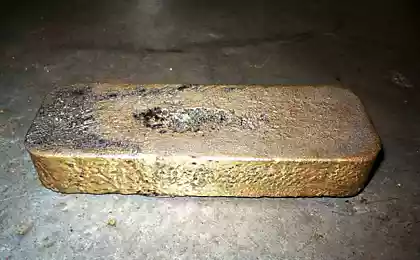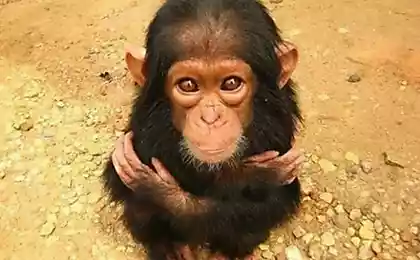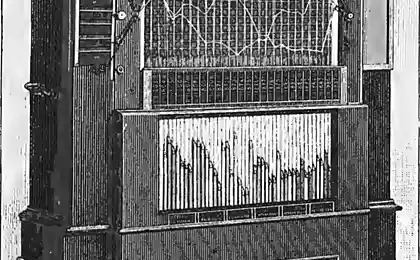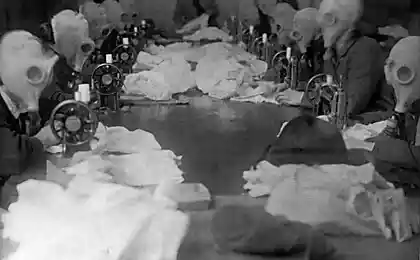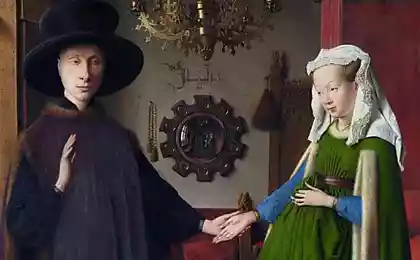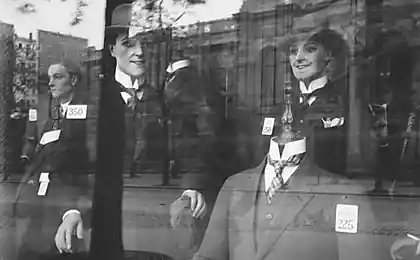483
Lessons from the past. The extraordinary story of one of the societies
Through cooperation, a remote village in the Altai province the peasants had their own oil mill, power station and even telephony. Surprisingly, for all these wonders not spent a dime of public funds. And most importantly, that all this happened at the beginning of the XX century!
About a century ago, an Old bard, a small village of Biysk district of the Altai province, impressed the public genuine miracles. Each peasant house, each household shed in the village was electrified. Worked a Telegraph line between the Old Bard and other settlements. For internal communication, local peasants actively used home telephones. In the village worked the "people's house", a leisure centre with theatre and cinema. Young people particularly loved movies, so subsequently the property was also purchased for self-cinematic experiments. Interestingly, all the above paintings of rural life are period of 10-ies of XX century.
Ninety million four hundred three thousand four hundred sixty four
Workers at the dairy. Photo from the archive.
A similar metamorphosis in the "wilderness" marveled the big cities and the capital. Especially amazing transformation of the village is perceived after a brief acquaintance with his cooperational history. The Old village of bard at the turn of the century was a place a little remarkable and rather depressing. Interesting facts biography of the village newspaper "Siberian agriculture", "the Old bard, prior to the development of societies was one Zabolotnaya and villages of the Altai mountains. Different staropatitsa their riot, fights and robberies".
And so, after a few years in the same Old bard operates a rapidly growing cooperation with the high level of organization. Theorists puzzled trying to unravel the background of the extraordinary transformation of the Old Bards. The reasons for the success of the Altai cooperatives are not less interesting today, though, because the experience of pre-revolutionary cooperation in Russia could be of practical use in our days. With the aim of drawing lessons from the past, let us try to analyze how mosaic, the factors of successful development of cooperation of the village the Old bard. For this, it is first necessary to trace how it all began.
With regard to the Old bard, will be somewhat more appropriate to reformulate the question: "with who" started it all? All the initial changes required of the individual staropatitsa A. E. Antonov. The future reformer and ideologist of the principles of cooperation, Antonov once fled to the mainland along with the circus. Postranstvovat half of my life, at the age of 32 years in 1900 he and his family moved to the Old bard in a permanent place of residence. Soon he begins to share acquired knowledge and experience with local residents, organizing a library club, which frequently passed the evening reading followed by a discussion. Antonov was read aloud for the farmers newspaper and magazine articles, excerpts from works of art. Especially fond of staropatitsa "Taras Bulba". After some time in the course went and scientific works in the field of agriculture, where, among other topics, addressed issues of work organization in cooperatives. Antonov, sympathetic to the ideas of cooperation, was able to find like-minded locals. As a result, in 1907, the Old bard opened the first dairy cooperative.
Special attention is given to opening in 1909, the first consumer cooperative store. Together, farmers began to buy the basic necessities yourself, being able thereby to put an end to the monopolistic position of the private entrepreneur M. V. burljaeva, the owner is the only one in the village retail outlets. In the same year, bard earned in the Old oil mill for the production of hemp and flax oils. The most important transformation should also be considered a discovery, the efforts of the villagers and of the Board of the cooperative savings and loan Association "a Savings". Staropatitsa have the opportunity to obtain long-term loans at low interest rates, which in turn allowed to avoid the mediation of money-lenders. All of the above actions rural cooperative has determined its further development.
Growing production volumes and new financial opportunities led to understanding of necessity of implementation of major infrastructure projects. Most revealing in this respect, the construction in 1911 of cooperative mills and power plants. Two years later, on completion, was organized the solemn event, which coincided, by chance, with the tercentenary of the Romanov dynasty. After the celebrations at the joint meeting decided on the establishment of the people's House, for cultural and leisure activities of rural residents.
I must say that education in the Old bard of attention was paid hardly less than production. When opened the people's House a library and reading room, dining room and tea room, a cinema and a stage for lectures, performances and other events. The means cooperative creameries were collected a decent library Fund and an impressive, for its time, film. The cultural development of the inhabitants of the village contributed to the rapid growth of drive. Most of the peasant members of the co-operative has been striving for further development.
To ensure greater food autonomy, the cooperative decides on the organization of agricultural society. Created by experienced field and experimental farmyard. Conducted numerous experiments with agricultural crops for breeding species, the most resistant to local climatic conditions. Was a rolling point where it was possible to obtain the equipment for temporary use. Were invited experts from neighboring regions. In the people's House not once organized lectures on agricultural topics.
The culminating point of the development, and the brightest page in the history of the Old Bards can be considered the formation of the Biya-Katun cooperative Union. The Union includes eight consumer societies, six dairy cooperatives and four credit unions. As a result, significantly increased competitive opportunities, opened new horizons of development. As markets began to consider not only the regions of Siberia, seemed potentially attractive market of Mongolia. For faster communication between the localities members of the cooperative Union was built Telegraph line, and the Board purchased the car. For the period of existence of the Biya-Katun Union was put into operation: two riveted factory, soap factory, cement factory, tin can and metal turning workshops. After the arrival of Soviet power in 1920, the Union was eliminated, the property was nationalized, Antonov several times served links.
But still, this is not a story with a sad end. The old bard is an example, which should be today. Based on historical factors we can try to derive a formula for the success of societies. Among the institutional reasons for the prosperity of the cooperative form of management is essential ability to sell the goods without too much mediation on the one hand, and the practice of long-term funds and loans available – with the other hand. No less significant, pivotal role in the success of staropatitsa played by intangible factors: the role of personality and the eternal desire to develop. Antonov was not afraid to take the initiative and put into reality the ambitious idea, the most revealing in this context, the construction of the first in Siberia hidroelektrostacija. Probably Antonov in its activities is guided by the precepts of Stolypin, and the scale of the village, as well as the legendary reformer, sought support in "tough and strong" and not drunk and weak.
Staropatitsa never going to stop. In one decade they have managed to go from being cooperative creameries, bringing together 30 households to the largest in the province cooperative Union. Thus, financial resources have been invested not only in potentially lucrative infrastructure projects, such as construction of factories, large-scale expenditure was on educational needs. Such investments, despite initial unprofitability in the long run could pay off with the emergence of young competent professionals in the industry. The strategic mindset of the leaders of the cooperative, of course, the most important factor of development.
Meanwhile, the main engine of success noted by eyewitnesses of miraculous transformation of the village. So, in the third issue of "Siberian agriculture" for 1916 you can read the following lines: "in Spite of the wide cooperative activities of staropatitsa, you would think that everything here is imbued with the idea of cooperation, that there are no separate individuals, there is one common family, having the motto – one for all and all for one".
Now, it seems, the formula for organizing a successful cooperative Union is open to: citizens active and initiative + equal partnership of manufacturers, suppliers and creditors in the name of common interests + focus on long-term projects together with a constant desire to improve. The case for small – to confirm or refute a formula empirically! published
In the village of Krasnogorsk (until 1960 Old bard) installed memory Board.
P. S. And remember, only by changing their consumption — together we change the world! ©
Join us in Facebook , Vkontakte, Odnoklassniki
Source: lavkagazeta.com/otvetstvennost/uroki-iz-proshlogo-neobyknovennaya-istoriya-odnoy-kooperacii
About a century ago, an Old bard, a small village of Biysk district of the Altai province, impressed the public genuine miracles. Each peasant house, each household shed in the village was electrified. Worked a Telegraph line between the Old Bard and other settlements. For internal communication, local peasants actively used home telephones. In the village worked the "people's house", a leisure centre with theatre and cinema. Young people particularly loved movies, so subsequently the property was also purchased for self-cinematic experiments. Interestingly, all the above paintings of rural life are period of 10-ies of XX century.
Ninety million four hundred three thousand four hundred sixty four
Workers at the dairy. Photo from the archive.
A similar metamorphosis in the "wilderness" marveled the big cities and the capital. Especially amazing transformation of the village is perceived after a brief acquaintance with his cooperational history. The Old village of bard at the turn of the century was a place a little remarkable and rather depressing. Interesting facts biography of the village newspaper "Siberian agriculture", "the Old bard, prior to the development of societies was one Zabolotnaya and villages of the Altai mountains. Different staropatitsa their riot, fights and robberies".
And so, after a few years in the same Old bard operates a rapidly growing cooperation with the high level of organization. Theorists puzzled trying to unravel the background of the extraordinary transformation of the Old Bards. The reasons for the success of the Altai cooperatives are not less interesting today, though, because the experience of pre-revolutionary cooperation in Russia could be of practical use in our days. With the aim of drawing lessons from the past, let us try to analyze how mosaic, the factors of successful development of cooperation of the village the Old bard. For this, it is first necessary to trace how it all began.
With regard to the Old bard, will be somewhat more appropriate to reformulate the question: "with who" started it all? All the initial changes required of the individual staropatitsa A. E. Antonov. The future reformer and ideologist of the principles of cooperation, Antonov once fled to the mainland along with the circus. Postranstvovat half of my life, at the age of 32 years in 1900 he and his family moved to the Old bard in a permanent place of residence. Soon he begins to share acquired knowledge and experience with local residents, organizing a library club, which frequently passed the evening reading followed by a discussion. Antonov was read aloud for the farmers newspaper and magazine articles, excerpts from works of art. Especially fond of staropatitsa "Taras Bulba". After some time in the course went and scientific works in the field of agriculture, where, among other topics, addressed issues of work organization in cooperatives. Antonov, sympathetic to the ideas of cooperation, was able to find like-minded locals. As a result, in 1907, the Old bard opened the first dairy cooperative.
Special attention is given to opening in 1909, the first consumer cooperative store. Together, farmers began to buy the basic necessities yourself, being able thereby to put an end to the monopolistic position of the private entrepreneur M. V. burljaeva, the owner is the only one in the village retail outlets. In the same year, bard earned in the Old oil mill for the production of hemp and flax oils. The most important transformation should also be considered a discovery, the efforts of the villagers and of the Board of the cooperative savings and loan Association "a Savings". Staropatitsa have the opportunity to obtain long-term loans at low interest rates, which in turn allowed to avoid the mediation of money-lenders. All of the above actions rural cooperative has determined its further development.
Growing production volumes and new financial opportunities led to understanding of necessity of implementation of major infrastructure projects. Most revealing in this respect, the construction in 1911 of cooperative mills and power plants. Two years later, on completion, was organized the solemn event, which coincided, by chance, with the tercentenary of the Romanov dynasty. After the celebrations at the joint meeting decided on the establishment of the people's House, for cultural and leisure activities of rural residents.
I must say that education in the Old bard of attention was paid hardly less than production. When opened the people's House a library and reading room, dining room and tea room, a cinema and a stage for lectures, performances and other events. The means cooperative creameries were collected a decent library Fund and an impressive, for its time, film. The cultural development of the inhabitants of the village contributed to the rapid growth of drive. Most of the peasant members of the co-operative has been striving for further development.
To ensure greater food autonomy, the cooperative decides on the organization of agricultural society. Created by experienced field and experimental farmyard. Conducted numerous experiments with agricultural crops for breeding species, the most resistant to local climatic conditions. Was a rolling point where it was possible to obtain the equipment for temporary use. Were invited experts from neighboring regions. In the people's House not once organized lectures on agricultural topics.
The culminating point of the development, and the brightest page in the history of the Old Bards can be considered the formation of the Biya-Katun cooperative Union. The Union includes eight consumer societies, six dairy cooperatives and four credit unions. As a result, significantly increased competitive opportunities, opened new horizons of development. As markets began to consider not only the regions of Siberia, seemed potentially attractive market of Mongolia. For faster communication between the localities members of the cooperative Union was built Telegraph line, and the Board purchased the car. For the period of existence of the Biya-Katun Union was put into operation: two riveted factory, soap factory, cement factory, tin can and metal turning workshops. After the arrival of Soviet power in 1920, the Union was eliminated, the property was nationalized, Antonov several times served links.
But still, this is not a story with a sad end. The old bard is an example, which should be today. Based on historical factors we can try to derive a formula for the success of societies. Among the institutional reasons for the prosperity of the cooperative form of management is essential ability to sell the goods without too much mediation on the one hand, and the practice of long-term funds and loans available – with the other hand. No less significant, pivotal role in the success of staropatitsa played by intangible factors: the role of personality and the eternal desire to develop. Antonov was not afraid to take the initiative and put into reality the ambitious idea, the most revealing in this context, the construction of the first in Siberia hidroelektrostacija. Probably Antonov in its activities is guided by the precepts of Stolypin, and the scale of the village, as well as the legendary reformer, sought support in "tough and strong" and not drunk and weak.
Staropatitsa never going to stop. In one decade they have managed to go from being cooperative creameries, bringing together 30 households to the largest in the province cooperative Union. Thus, financial resources have been invested not only in potentially lucrative infrastructure projects, such as construction of factories, large-scale expenditure was on educational needs. Such investments, despite initial unprofitability in the long run could pay off with the emergence of young competent professionals in the industry. The strategic mindset of the leaders of the cooperative, of course, the most important factor of development.
Meanwhile, the main engine of success noted by eyewitnesses of miraculous transformation of the village. So, in the third issue of "Siberian agriculture" for 1916 you can read the following lines: "in Spite of the wide cooperative activities of staropatitsa, you would think that everything here is imbued with the idea of cooperation, that there are no separate individuals, there is one common family, having the motto – one for all and all for one".
Now, it seems, the formula for organizing a successful cooperative Union is open to: citizens active and initiative + equal partnership of manufacturers, suppliers and creditors in the name of common interests + focus on long-term projects together with a constant desire to improve. The case for small – to confirm or refute a formula empirically! published
In the village of Krasnogorsk (until 1960 Old bard) installed memory Board.
P. S. And remember, only by changing their consumption — together we change the world! ©
Join us in Facebook , Vkontakte, Odnoklassniki
Source: lavkagazeta.com/otvetstvennost/uroki-iz-proshlogo-neobyknovennaya-istoriya-odnoy-kooperacii

